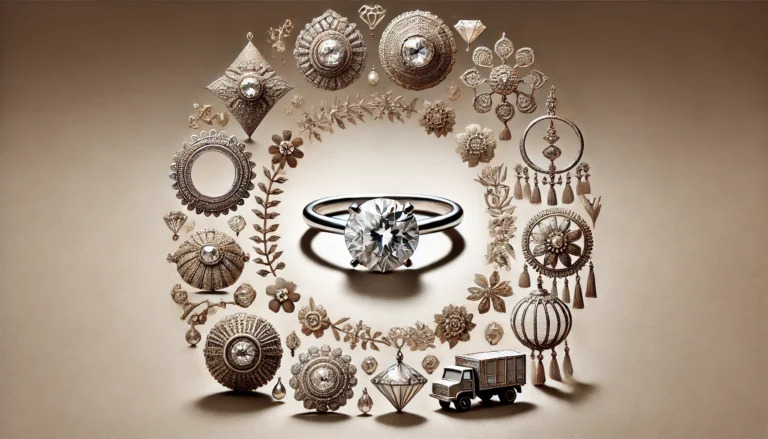Brilliant Structures: Diamonds Shaping Buildings Around the World
Have you ever wondered how diamonds shape our city’s buildings or influence the way we experience architectural spaces? This article invites you on a journey to explore buildings where the symbolism of diamonds transcends their industry and influences architects globally with meaning and aesthetic appeal. We will explore examples of how architects evoke the timeless beauty of diamonds to create dazzling structures that resonate with profound symbolic significance.
“Architecture is a visual art, and buildings speak for themselves.” The famous American architect Julia Morgan emphasizes the essence of architectural design in this quote. She affirms that architecture goes beyond mere practicality, looking for an artistic expression. Buildings have the ability to convey messages and evoke emotions through their visual elements, such as form, materials, and spatial composition, allowing them to tell stories without the need for words.
Diamonds, known for their beauty, strength, and complex structure, have greatly influenced architectural design. They are essential symbols of luxury, elegance, and high status, which translate into architecture through diamond-inspired elements that convey opulence and exclusivity. Buildings incorporating these elements often become iconic landmarks, enhancing the cultural and economic value of their locations. Their unique and striking designs draw admiration, similar to the appeal of finely cut diamonds, making them desirable places for businesses, homes, or cultural institutions.
Furthermore, many iconic buildings worldwide draw inspiration from the shape, material, and symbolism of diamonds. Here are five contemporary buildings that exemplify these concepts:
- Le Kinémax, Poitiers by Denis Laming
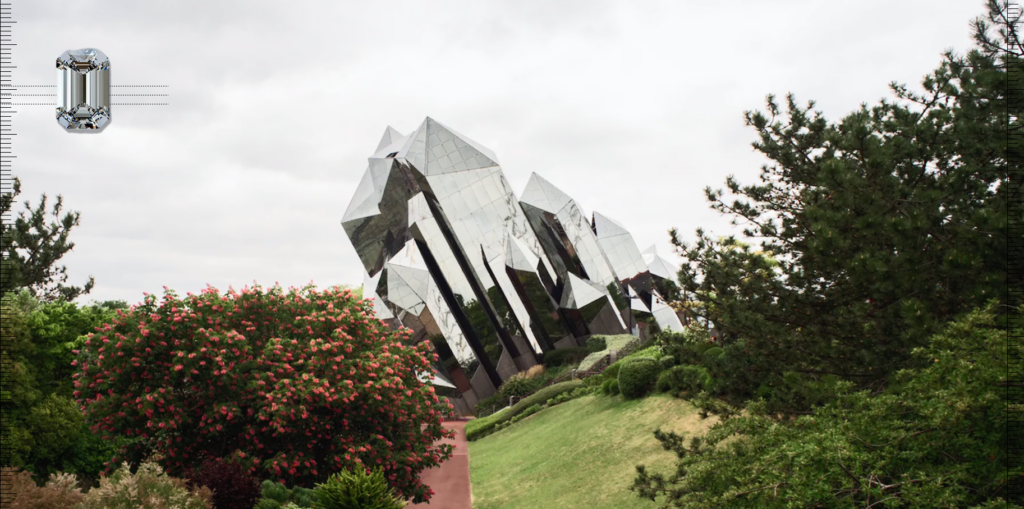
Le Kinémax in Poitiers, designed by Denis Laming, features a striking diamond-shaped facade. Opened in 1987 as part of France’s renowned Futuroscope amusement park, Le Kinémax is a stunning example of futuristic design. The building’s angular geometry and reflective surfaces resemble the natural facets of a diamond. Emerging from the surface of the earth at a 60-degree incline, the construction showcases a blend of modernity and natural elegance.
- Museum of Contemporary Art, Cleveland by Farshid Moussavi
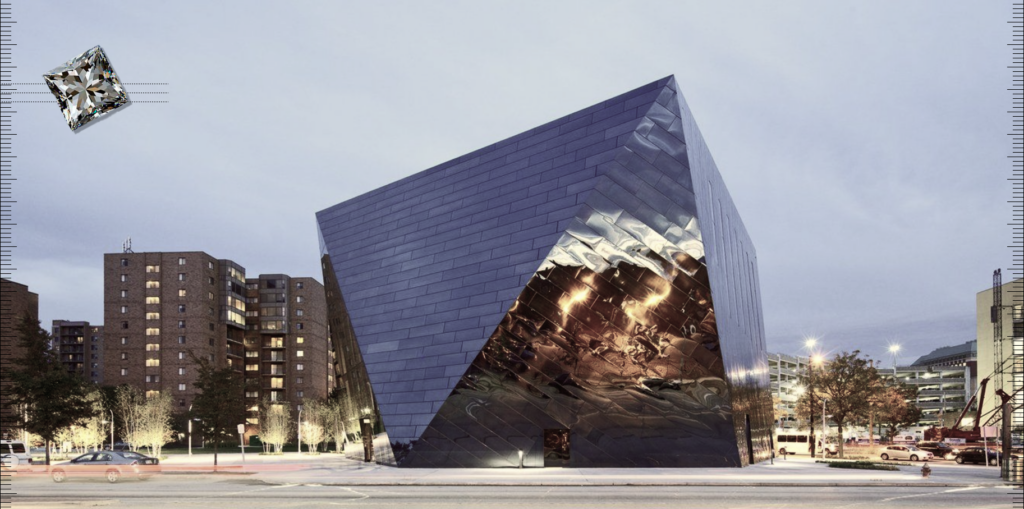
Designed by the acclaimed architect Farshid Moussavi, the Museum of Contemporary Art in Cleveland stands as a prominent cultural landmark. Situated at the crossroads of two major avenues, the museum is adjacent to a new public square designed by James Corner Field Operations. Its unique geometric form, with mirrored black stainless-steel cladding, reflects the dynamic environment around it. The museum features entrances on four sides, offering flexibility for various exhibitions and events. As a non-collecting museum, it emphasises public programmes and events, held in a versatile double-height multi-purpose space on the ground floor. The innovative design and community-focused approach make this museum a vibrant hub for contemporary art and culture.
- Basque Health Department, Bilbao by Juan Coll-Barreau
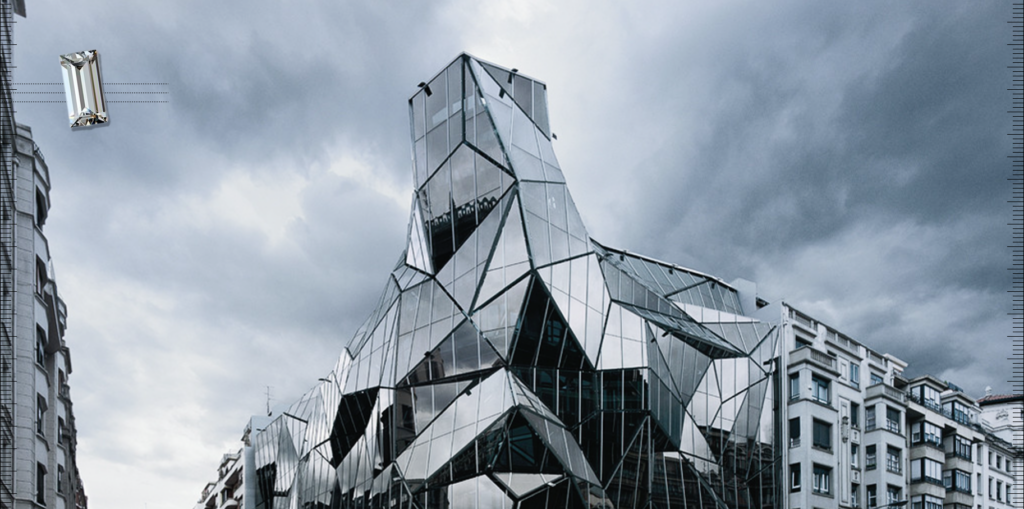
Located in Bilbao, the Basque Health Department building, designed by Juan Coll-Barreau, mirrors the crystalline form of natural diamonds. The building features multifaceted glass sheets that evoke the crystalline form of diamonds, creating a dazzling effect. The structure’s glass facade not only reflects various aspects of city life but also adheres to strict city regulations, ensuring fire resistance and natural insulation without the need for air conditioning. This building exemplifies calculated dynamism at its finest. The versatility of the glass facade mirrors the vibrant city life, similar to the multifaceted nature of a diamond. Adhering to stringent city regulations, the building ensures fire safety and natural insulation, eliminating the need for air conditioning. It showcases sophisticated combination of dynamism and practicality.
- Port House, Antwerp by Zaha Hadid
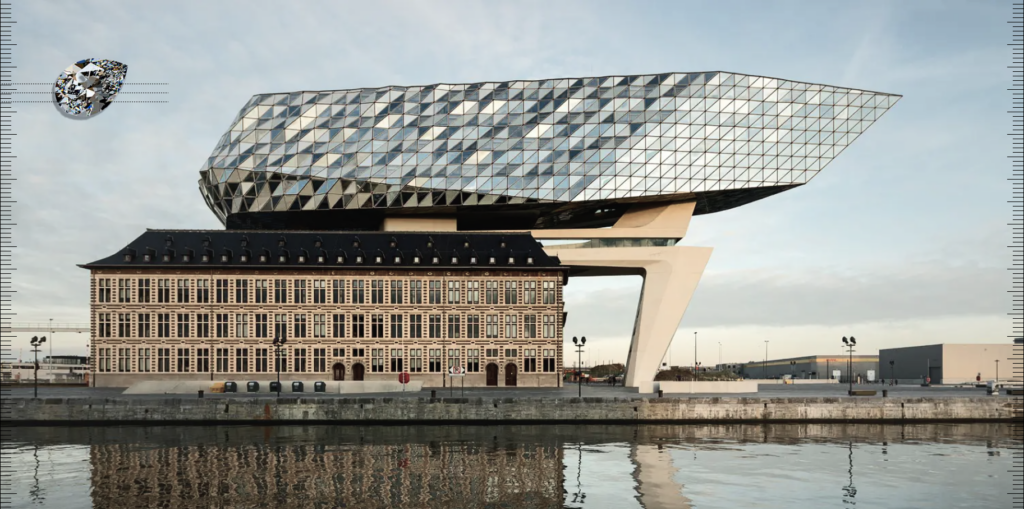
The Port House in Antwerp, designed by Zaha Hadid, majestically rises from the site of an old fire station. It’s renowned as one of the most sustainable architectural designs of our time. The building not only effectively repurposes an older space but also emphasises sustainability through innovative heating and cooling technologies. Using borehole techniques, it minimises water consumption and optimises natural daylight, reducing the need for artificial lighting. What captivates me the most is how it seamlessly integrates Antwerp’s rich history and its close ties to natural diamonds. The borehole technology employed here efficiently heats and cools the structure, ensuring minimal water use. Additionally, the architectural design maximises daylight utilisation, cutting down on the need for artificial lighting. The building’s ability to encapsulate Antwerp’s history and its connection to natural diamonds is truly fascinating, pointing towards a bright and sustainable future.
- The Louvre Pyramid, Paris
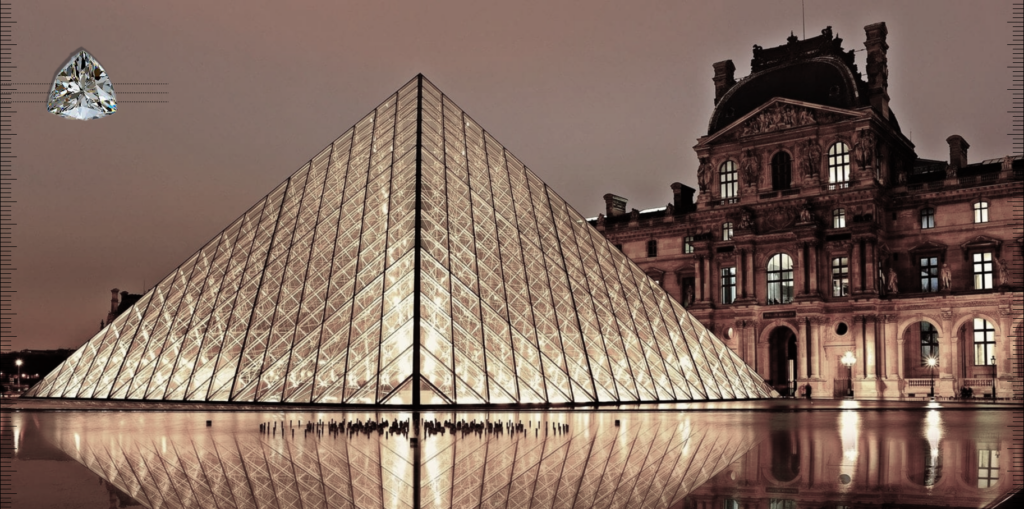
Standing proudly in the courtyard of the historic Louvre Museum in Paris, The Louvre Pyramid, designed by I. M. Pei, is an iconic example of modern architecture harmoniously coexisting with classical surroundings. Completed in 1989, this glass and metal structure forms a perfect geometric pyramid, drawing inspiration from the precision and beauty of a finely cut diamond. The pyramid’s transparent facade allows natural light to flood the underground museum space, creating an inviting and luminous atmosphere. This juxtaposition of old and new, coupled with its diamond-like brilliance, has made The Louvre Pyramid a symbol of Parisian elegance and a must-see architectural marvel.
To conclude, these architectural marvels illustrate how the beauty, symbolism, and strength of diamonds inspire imaginative and striking building designs. As architecture continues to evolve, it’s evident that the enduring elegance and durability of diamonds will continue to captivate and inspire designers and architects worldwide. These buildings are certainly worth your visit to witness their brilliance firsthand.



